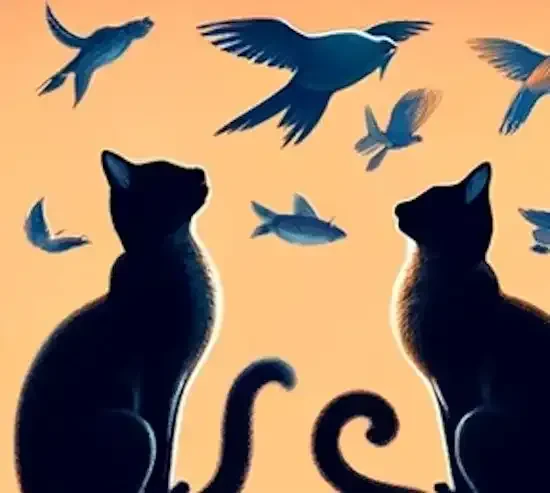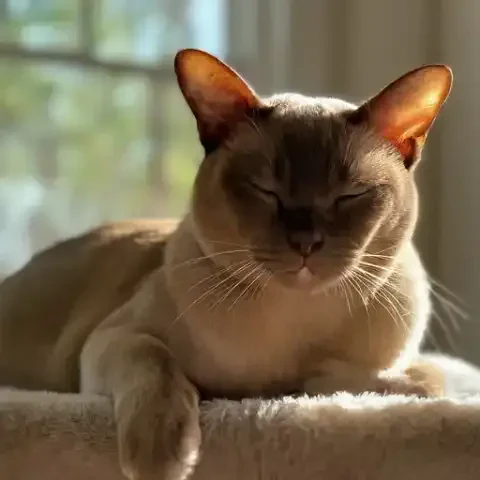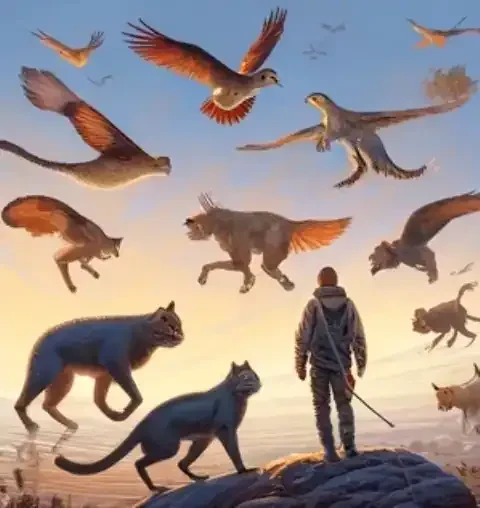The soft purr of a cat nestled in your lap, a comforting vibration against your fingertips. The sudden, vibrant flash of a cardinal’s wing in your garden, a fleeting moment of wild beauty. Both experiences resonate with a deep joy, a connection to the living world. But for those who cherish both domestic felines and the untamed beauty of nature, a disquieting question often lingers: are these two worlds, so seemingly harmonious in our individual moments of appreciation, inherently on a collision course?
The answer, unfortunately, is complex and increasingly concerning. Consider this staggering figure: millions upon millions of birds and small mammals. This isn’t a speculative estimate; it’s the calculated toll taken by domestic cats on wildlife each year, a relentless attrition across continents and ecosystems. It's a number that forces us to confront the uncomfortable truth about the impact of our beloved pets on the delicate balance of the natural world and raises crucial questions about our responsibility to both domestic animals and the wider environment. As cat lovers and nature enthusiasts, many wrestle with this inherent tension: how can we reconcile our deep affection for our feline companions, creatures we welcome into our homes and hearts, with our equally profound commitment to wildlife conservation, a commitment to preserving the biodiversity and ecological integrity of the planet?
This article embarks on a journey to explore this intricate and often emotionally charged relationship between domestic cats and wildlife conservation. We will delve into the scientific evidence that illuminates the scope of the issue, quantifying the real and significant impact cats have on wild populations. We will examine the different categories of domestic cats, from cherished indoor pets to unowned feral colonies, understanding how each population contributes differently to the overall picture. We will explore the conservation perspective, examining why wildlife predation by cats isn't just a localized issue, but a global conservation concern with far-reaching ecological consequences. Crucially, we will also consider the cat welfare perspective, acknowledging the ethical dimensions of cat management and emphasizing the need for humane and compassionate solutions. Finally, we will navigate the challenging terrain of finding solutions, exploring mitigation strategies, responsible pet ownership practices, and community-level initiatives that strive for a more harmonious and balanced coexistence, a future where both domestic felines and native wildlife can thrive.
To understand the gravity of the situation, we must first confront the scale of the problem. The impact of domestic cats on wildlife is not a trivial concern; it is a significant ecological force, quantified by staggering predation statistics that paint a sobering picture. Global estimates, compiled from numerous scientific studies and conservation organization data, suggest that domestic cats are responsible for killing billions of animals annually. While precise numbers are inherently difficult to ascertain across diverse ecosystems and cat populations, the scale of predation is undeniable. Regional studies, often focusing on specific habitats or vulnerable species, further solidify this alarming trend, documenting significant declines in local wildlife populations directly attributable to cat predation.
These aren't just abstract numbers; they represent real animals, individual lives extinguished prematurely. And the impact extends far beyond mere mortality. While the sheer volume of prey killed is devastating, scientists are increasingly recognizing the subtle but equally detrimental sublethal effects of cat predation. The constant presence of cats in an environment, even without direct kills, can induce chronic stress in prey species. This stress can manifest in reduced foraging efficiency, forcing prey animals to spend more time vigilant and less time feeding, impacting their overall health and reproductive success. It can also alter behaviour patterns, driving prey species away from optimal habitats or disrupting natural social structures, further destabilizing wildlife populations.
Why are cats such remarkably effective predators, even those who are well-fed and seemingly content within our homes? The answer lies deep within their evolutionary programming. Hunting is not a learned behaviour for cats; it’s an ingrained, instinctual drive, as fundamental to their nature as breathing and purring. This predatory instinct is independent of hunger. Even a cat with a full food bowl will readily engage in hunting behaviour if given the opportunity, driven by an innate desire to stalk, chase, pounce, and capture. This isn't about survival for a well-fed domestic cat; it's about fulfilling a core aspect of their feline identity. The predatory behaviours we find so charming – the silent stalk, the focused gaze, the lightning-fast pounce – are honed by millennia of evolution, making them incredibly effective hunters.
Adding to their predatory prowess is their activity pattern. Cats are naturally crepuscular and nocturnal, meaning they are most active during dawn and dusk and throughout the night. This activity cycle perfectly overlaps with the peak activity periods of many prey species, particularly birds during their dawn chorus and small mammals who are often most active under the cover of darkness. This temporal overlap amplifies the chances of encounters and successful hunts, making cats exceptionally efficient predators during these critical periods for wildlife. Perhaps the most significant factor amplifying the collective impact of cats is their sheer density, especially in human-modified landscapes. Unlike natural predators whose populations are typically regulated by prey availability and territoriality, domestic cat populations, particularly owned outdoor cats and unmanaged stray colonies, can reach remarkably high densities, especially in urban and suburban environments. Even if an individual cat only kills a few animals per year, the cumulative effect of millions of cats, each contributing to the predation pressure, becomes ecologically significant.
The impact of cats on wildlife is not uniform across all environments. Geographic variations in ecosystems and cat populations lead to differing levels of ecological disruption. Urban and suburban environments, characterized by fragmented habitats, high cat densities, and often reduced natural predator populations, tend to experience a more pronounced impact from cat predation. Wildlife in these areas may already be stressed and vulnerable due to habitat loss and human disturbance, making them even more susceptible to cat predation. In contrast, rural environments, while also supporting cat populations, may have more intact ecosystems and a greater diversity of natural predators, potentially diluting the overall impact of cats, although localized effects can still be significant.
Island ecosystems, however, represent a particularly alarming scenario. Islands often harbour unique and endemic species that have evolved in isolation, frequently without the presence of mammalian predators. Native wildlife on islands, therefore, often lack the evolved defenses and predator avoidance behaviours necessary to cope with introduced predators like domestic cats. The introduction of cats to island ecosystems has been linked to numerous extinctions and severe declines of native bird, reptile, amphibian, and mammal species, making island conservation a critical area of concern in the context of cat predation. Habitat fragmentation itself exacerbates the problem. As natural habitats become increasingly fragmented, cats, often associated with human development along habitat edges, become concentrated along these boundaries. This "edge effect" increases predation pressure in the remaining fragments of natural habitat, disproportionately impacting wildlife populations that rely on these shrinking areas for survival.
When discussing the impact of cats, it’s crucial to differentiate between various cat populations, as their roles and effects on wildlife vary significantly. Indoor-only cats, by definition, have a minimal direct impact on wildlife predation. When kept strictly indoors, these cats pose negligible threat to wild animal populations. While indoor cats do have indirect environmental footprints – resource consumption associated with pet food production, litter, and pet supplies – these indirect impacts are considerably smaller in scale and less ecologically damaging than the direct predation caused by outdoor cats. Responsible pet ownership, in this context, often aligns directly with wildlife conservation. Keeping cats indoors, providing them with enriching indoor environments, and embracing responsible pet care practices, represents the most wildlife-friendly approach to cat ownership.
Owned outdoor cats, however, present a vastly different picture. Despite being cared for and fed by humans, owned cats who are allowed to roam outdoors contribute significantly to wildlife mortality. The common misconception that well-fed cats don’t hunt is demonstrably false. As established earlier, hunting is instinctual and independent of hunger in cats. Even a cat with a full stomach will readily hunt if given the opportunity. While hunting rates do vary between individual cats, influenced by factors like personality, age, hunting experience, and the availability of prey in their environment, the collective impact of millions of owned outdoor cats remains substantial. Responsible pet ownership for outdoor cats, therefore, necessitates implementing mitigation strategies to minimize their impact on wildlife. These strategies include containment options like cat enclosures (catios) and secure gardens, limiting unsupervised outdoor time, using deterrents like bells (with acknowledged limitations), and embracing supervised outdoor experiences like leash walking.
Stray and feral cat populations represent the most challenging aspect of the cats and wildlife conservation issue. Unowned, stray, and feral cats, often living in colonies or roaming freely, typically have the highest predation impact on wildlife. Their sheer numbers, combined with a lack of human control and often a greater reliance on hunting for survival, makes them a significant predator pressure in many ecosystems. Uncontrolled breeding within stray and feral cat populations is a major driver of their population growth, further exacerbating wildlife predation issues. Managing these populations presents complex ethical and practical challenges. Trap-Neuter-Return (TNR) programs, while widely implemented and often perceived as a humane solution, remain a subject of ongoing debate regarding their effectiveness in significantly reducing overall cat populations and, consequently, wildlife predation in broader landscapes. Euthanasia of feral cats, while sometimes considered as a last resort in ecologically critical contexts, is highly controversial and raises significant ethical concerns. Finding humane and effective management strategies for stray and feral cat populations is a critical, yet often fraught, aspect of addressing the broader cats and wildlife conservation challenge.
From a conservation perspective, wildlife predation by domestic cats isn't merely an unfortunate consequence of pet ownership; it's a significant driver of biodiversity loss and ecosystem disruption. The impact is particularly pronounced on vulnerable and declining species, those already facing threats from habitat loss, climate change, pollution, and other anthropogenic pressures. Cat predation adds another layer of stress to these already fragile populations, pushing some species closer to the brink of extinction. Numerous examples exist across the globe: ground-nesting birds, already vulnerable to habitat fragmentation, are particularly susceptible to cat predation. Small native mammals, crucial components of many food webs, suffer significant losses to cat predation, impacting predator-prey dynamics and ecosystem balance. Island ecosystems, as previously mentioned, serve as stark case studies, demonstrating the devastating impact of introduced cats on unique and often defenseless native species, leading to extinctions and profound ecosystem alterations.
Beyond direct species loss, cat predation can disrupt entire ecosystems. As keystone prey species decline due to cat predation, cascading effects can ripple through the food web, impacting predator populations further up the chain and altering ecosystem functions. For instance, decline in native rodent populations due to cat predation can impact raptor populations that rely on them as a food source, while also altering plant communities through changes in seed dispersal patterns. The economic and social consequences of wildlife decline, exacerbated by cat predation, also warrant consideration. Industries reliant on healthy wildlife populations, such as birdwatching and wildlife tourism, can be negatively impacted by biodiversity loss. Furthermore, the issue of cat predation can fuel human-wildlife conflict, contributing to negative perceptions of cats in communities concerned about wildlife, and creating tension between cat lovers and conservation advocates. Ultimately, wildlife conservation is rooted in an ethical responsibility to protect native biodiversity for its intrinsic value and for the benefit of future generations. Addressing the impact of cats on wildlife is not just about protecting individual animals; it's about upholding this broader ethical responsibility and safeguarding the health and integrity of our ecosystems.
However, any discussion of cats and wildlife conservation must also thoughtfully consider the cat welfare perspective. Ethical considerations surrounding cat management are paramount. Any solutions aimed at mitigating cat predation must prioritize humane treatment and avoid cruelty to cats. Simply demonizing cats or advocating for inhumane control methods is not only ethically unacceptable but also ultimately counterproductive. Addressing the root causes of stray and feral cat populations is crucial. Focus should be placed on tackling the issues of pet abandonment, irresponsible pet ownership practices that lead to uncontrolled breeding, and the lack of widespread access to affordable spay/neuter services. These root causes, rather than the cats themselves, are the underlying drivers of the stray and feral cat population issue.
Public education plays a vital role in promoting both cat welfare and wildlife conservation. Education initiatives should emphasize responsible pet ownership practices, including the importance of indoor confinement for cats to protect wildlife, the critical need for spaying and neutering all owned cats, and the availability of resources and support for responsible cat care. Misconceptions about cat welfare and indoor life must be actively debunked. The notion that indoor cats are inherently unhappy or deprived is simply untrue. Indoor cats can live rich, fulfilling lives with proper environmental enrichment. Providing vertical space, scratching opportunities, regular play sessions, puzzle feeders, and stimulating toys can create a stimulating and engaging indoor environment that meets all their behavioural needs. The idea of "natural" cat behaviour needs to be reframed within the context of domesticity and responsible pet ownership. While acknowledging cats' natural instincts is important, responsible pet ownership involves providing for those needs in a way that is safe and ethically sound, which may necessitate limiting certain "natural" behaviours, like unrestricted outdoor hunting, if they pose a significant threat to wildlife or the cat's own safety. The benefits of indoor life for cats themselves are undeniable. Indoor cats live significantly longer, healthier, and safer lives compared to outdoor cats, who face risks from traffic, disease, predators, and human cruelty. Highlighting these benefits can encourage cat owners to embrace indoor confinement as a responsible and loving choice that prioritizes both cat welfare and wildlife conservation.
Finding solutions to the complex cats and wildlife conservation challenge requires a multi-faceted approach, focusing on mitigation strategies and promoting responsible coexistence. Responsible pet ownership stands as the cornerstone of any effective solution. Indoor confinement, as repeatedly emphasized, remains the gold standard for preventing wildlife predation. For cat owners, this means committing to keeping cats strictly indoors, providing them with enriching indoor environments that cater to their physical and mental needs. Spaying and neutering all owned cats is equally crucial, preventing unwanted litters and reducing the influx of cats into stray and feral populations. For cat owners who wish to provide their cats with outdoor experiences, containment is key. Cat enclosures (catios), secure gardens, leash walking, and supervised outdoor time offer safe and controlled ways for cats to enjoy the outdoors without posing a threat to wildlife.
While responsible pet ownership addresses the issue at the individual level, managing stray and feral cat populations requires community-level initiatives. Trap-Neuter-Return (TNR) programs, while debated, remain a widely used strategy. While their effectiveness in dramatically reducing overall cat populations and wildlife predation across large landscapes is debated, TNR programs can be effective in stabilizing and reducing cat colony sizes in specific, localized areas, and may offer some localized benefits for wildlife in those contexts, especially when combined with other mitigation strategies. Shelter policies play a crucial role. Promoting adoption of stray cats, rather than simply releasing them back into the environment, and implementing policies that prevent further release of unowned cats, are essential steps in reducing stray and feral cat populations. Public education and community involvement are vital for long-term success. Public education campaigns must promote responsible pet ownership, discourage the feeding of stray cats (as it can contribute to population growth), and encourage community participation in humane cat management efforts, including supporting local shelters and TNR programs.
Lethal control methods, such as euthanasia of feral cats, remain a highly controversial and ethically fraught topic. While sometimes considered as a last resort in specific, ecologically critical contexts, such as on islands where endangered species face imminent extinction due to cat predation, lethal control should never be considered a first-line or widespread solution. Such methods raise significant ethical concerns and are often met with strong public opposition. When considered, lethal control must be implemented with extreme caution, scientific rigor, and only after all humane alternatives have been exhausted, within a narrowly defined and ecologically justified context, and with full transparency and public discourse.
Ultimately, navigating the complex terrain of cats and wildlife conservation necessitates balancing compassion and conservation. This is not a simplistic dichotomy of “cats versus wildlife.” It’s a deeply nuanced issue involving our emotional attachments to both domestic animals and the natural world. Acknowledging this emotional complexity is crucial. Finding common ground and recognizing shared goals is essential for moving forward constructively. Cat welfare advocates and conservationists, despite differing perspectives, often share fundamental values: compassion for animals, a desire for a healthy environment, and a commitment to ethical action. Focusing on these shared values and seeking collaborative solutions is paramount. Promoting responsible coexistence, therefore, becomes the guiding principle. This involves advocating for a balanced approach that integrates responsible pet ownership, humane cat management strategies for stray and feral populations, and robust and effective wildlife conservation efforts. Coexistence is not about eliminating cats or sacrificing wildlife; it’s about finding a way for both to thrive, through informed decision-making, responsible actions, and a commitment to finding harmonious solutions.
As we navigate this complex issue, a call to action is essential, encompassing both individual and community responsibility. Each of us can make a difference through individual actions: embracing responsible pet ownership by keeping cats indoors, spaying and neutering all owned cats, and supporting local shelters and spay/neuter programs. Advocating for community-level initiatives is equally crucial: supporting responsible pet policies, promoting humane cat management programs like targeted and well-managed TNR in appropriate contexts, and actively participating in habitat conservation efforts that benefit native wildlife. By embracing responsible pet ownership, supporting humane management strategies, and fostering a greater understanding of the ecological impact of cats, we can strive towards a future where both domestic felines and native wildlife can thrive, sharing our world in a more balanced and sustainable way. Let’s choose compassion and preservation, working together to ensure a future where the soft purr of a contented cat and the vibrant song of a thriving bird both grace our world, not in conflict, but in harmonious coexistence.




